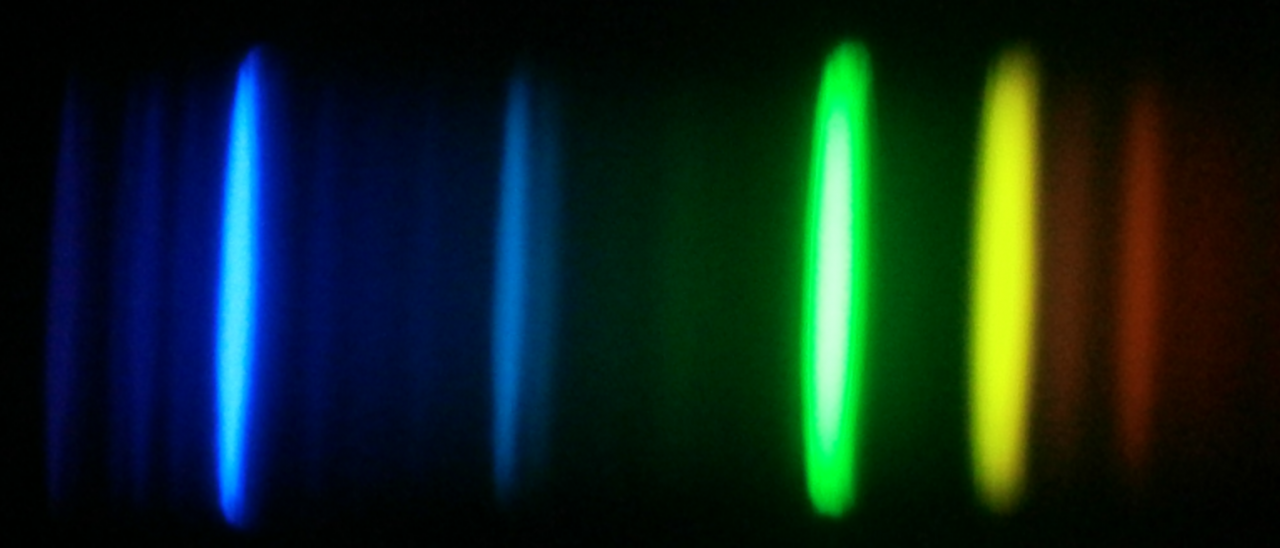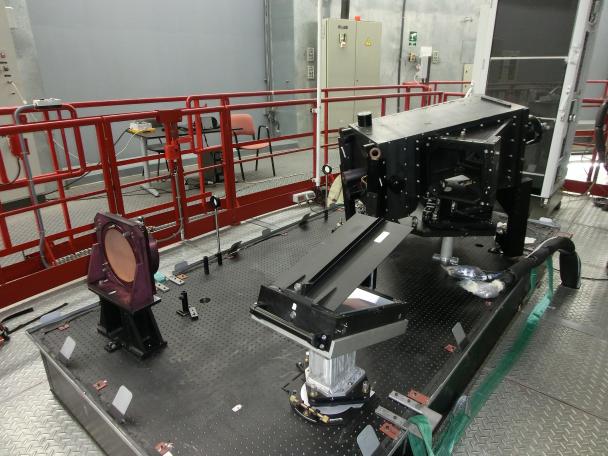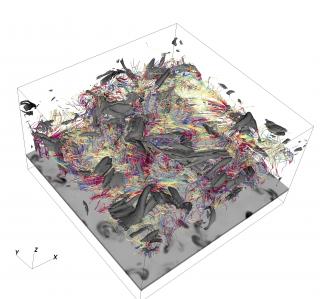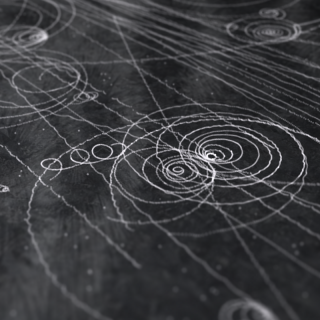Subvenciones relacionadas:
General
La espectroscopía de estrellas nos permite determinar las propiedades y composiciones químicas de las mismas. A partir de esta información para estrellas de diferente edad en la Vía Láctea es posible reconstruir la evolución química de la Galaxia, así como el origen de los elementos más pesados que el boro, forjados principalmente en los interiores estelares. También es posible estudiar la formación estelar, y la de la propia Galaxia, a través de la huella que deja el potencial Galáctico en las órbitas de las estrellas, y de las distribuciones de masa, edad y la abundancia de elementos pesados.
La obtención de espectros con alta resolución espectral, apropiados para estudios de la composición química, requiere instrumentación sofisticada y eficiente. Esto es especialmente cierto en investigaciones en las que se necesitan extensas muestras de estrellas, que exigen observar cientos, o incluso miles de fuentes de forma simultánea. El procesado y análisis de los datos debe ser automatizado para ser igualmente eficiente.
La interpretación de los espectros se basa en modelos físicos de las atmósferas de las estrellas, de donde se escapa la luz que observamos. Los ingredientes fundamentales para la construcción de estos modelos son la dinámica de fluidos, y las propiedades de los átomos, iones y moléculas, especialmente en lo que se refiere a sus interacciones con la radiación que proviene del interior estelar. Una vez que se tiene un modelo plausible, es posible calcular de forma detallada cómo se propaga la radiación a través de la atmósfera estelar, y el espectro emergente, para, de forma iterativa, compararlo con las observaciones y refinar el modelo.
Este Proyecto incluye tres diferentes frentes de investigación:
- La mejora de los modelos de atmósfera y las simulaciones de espectros estelares.
- El desarrollo de herramientas para la obtención, reducción y el análisis de observaciones espectroscópicas, y en particular para la determinación de abundancias químicas en estrellas.
- El diseño, preparación, y ejecución de estudios espectroscópicos de estrellas con el fin de entender a) los aspectos más relevantes de la física de las atmósferas estelares, b) la formación y evolución de las estrellas, c) el origen de los elementos químicos y d) la formación, estructura y evolución química de la Vía Láctea.
Miembros
Resultados
- Completar la instalación y pruebas de HORuS en GTC
- Descubrir dos nuevas estrellas con abundancias de hierro inferiores a 100.000 veces el valor solar
- Completar la clasificación de los espectros de APOGEE con K-means
- Publicar una colección completa de espectros modelo para estrellas O a M
- Identificar la huella de la difusión química en las atmósferas de estrellas del cúmulo M67
Actividad científica
Publicaciones relacionadas
-
The Open Cluster Chemical Abundances and Mapping Survey. IV. Abundances for 128 Open Clusters Using SDSS/APOGEE DR16
The Open Cluster Chemical Abundances and Mapping (OCCAM) survey aims to constrain key Galactic dynamical and chemical evolution parameters by the construction of a large, comprehensive, uniform, infrared-based spectroscopic data set of hundreds of open clusters. This fourth contribution from the OCCAM survey presents analysis using Sloan Digital
Donor, John et al.Fecha de publicación:
52020 -
The Extreme CNO-enhanced Composition of the Primitive Iron-poor Dwarf Star J0815+4729
We present an analysis of high-resolution Keck/HIRES spectroscopic observations of J0815+4729, an extremely carbon-enhanced, iron-poor dwarf star. These high-quality data allow us to derive a metallicity of [Fe/H] = −5.49 ± 0.14 from the three strongest Fe i lines and to measure a high [Ca/Fe] = 0.75 ± 0.14. The large carbon abundance of A(C) = 7
González Hernández, Jonay I. et al.Fecha de publicación:
12020 -
Stellar Characterization of M Dwarfs from the APOGEE Survey: A Calibrator Sample for M-dwarf Metallicities
We present spectroscopic determinations of the effective temperatures, surface gravities, and metallicities for 21 M dwarfs observed at high resolution (R ∼ 22,500) in the H band as part of the Sloan Digital Sky Survey (SDSS)-IV Apache Point Observatory Galactic Evolution Experiment (APOGEE) survey. The atmospheric parameters and metallicities are
Souto, Diogo et al.Fecha de publicación:
22020 -
Stellar atmospheric parameters of FGK-type stars from high-resolution optical and near-infrared CARMENES spectra
With the purpose of assessing classic spectroscopic methods on high-resolution and high signal-to-noise ratio spectra in the near-infrared wavelength region, we selected a sample of 65 F-, G-, and K-type stars observed with CARMENES, the new, ultra-stable, double-channel spectrograph at the 3.5 m Calar Alto telescope. We computed their stellar
Marfil, E. et al.Fecha de publicación:
32020 -
Signatures of the Galactic bar in high-order moments of proper motions measured by Gaia
Our location in the Milky Way provides an exceptional opportunity to gain insight on the galactic evolution processes, and complement the information inferred from observations of external galaxies. Since the Milky Way is a barred galaxy, the study of motions of individual stars in the bulge and disc is useful to understand the role of the bar. The
Palicio, Pedro A. et al.Fecha de publicación:
22020 -
The Pristine Survey - VIII. The metallicity distribution function of the Milky Way halo down to the extremely metal-poor regime
The Pristine survey uses narrow-band photometry to derive precise metallicities down to the extremely metal-poor regime ( [Fe/H] < -3), and currently consists of over 4 million FGK-type stars over a sky area of ̃ 2500 deg^2. We focus our analysis on a subsample of ̃80 000 main-sequence turn-off stars with heliocentric distances between 6 and 20 kpc
Youakim, K. et al.Fecha de publicación:
32020 -
Metallicity and α-Element Abundance Gradients along the Sagittarius Stream as Seen by APOGEE
Using 3D positions and kinematics of stars relative to the Sagittarius (Sgr) orbital plane and angular momentum, we identify 166 Sgr stream members observed by the Apache Point Observatory Galactic Evolution Experiment (APOGEE) that also have Gaia DR2 astrometry. This sample of 63/103 stars in the Sgr trailing/leading arm is combined with an APOGEE
Hayes, Christian R. et al.Fecha de publicación:
12020 -
A detailed non-LTE analysis of LB-1: Revised parameters and surface abundances
Context. It has recently been proposed that LB-1 is a binary system at 4 kpc consisting of a B-type star of 8 M ☉ and a massive stellar black hole (BH) of 70 M ☉. This finding challenges our current theories of massive star evolution and formation of BHs at solar metallicity. Aims: Our objective is to derive the effective temperature, surface
Simón-Díaz, S. et al.Fecha de publicación:
22020 -
ESPRESSO highlights the binary nature of the ultra-metal-poor giant HE 0107-5240
Context. The vast majority of the known stars of ultra low metallicity ([Fe/H] < -4.5) are known to be enhanced in carbon, and belong to the "low-carbon band" (A(C) = log(C/H)+12 ≤ 7.6). It is generally, although not universally, accepted that this peculiar chemical composition reflects the chemical composition of the gas cloud out of which these
Bonifacio, P. et al.Fecha de publicación:
12020 -
Physical parameters of red supergiants in dwarf irregular galaxies in the Local Group
Context. Increasing the statistics of evolved massive stars in the Local Group enables investigating their evolution at different metallicities. During the late stages of stellar evolution, the physics of some phenomena, such as episodic and systematic mass loss, are not well constrained. For example, the physical properties of red supergiants
Britavskiy, N. E. et al.Fecha de publicación:
112019 -
Homogeneous analysis of globular clusters from the APOGEE survey with the BACCHUS code - II. The Southern clusters and overview
We investigate the Fe, C, N, O, Mg, Al, Si, K, Ca, Ce, and Nd abundances of 2283 red giant stars in 31 globular clusters from high-resolution spectra observed in both the northern and Southern hemisphere by the SDSS-IV APOGEE-2 survey. This unprecedented homogeneous data set, largest to date, allows us to discuss the intrinsic Fe spread, the shape
Mészáros, Szabolcs et al.Fecha de publicación:
22020 -
The Pristine survey - VI. The first three years of medium-resolution follow-up spectroscopy of Pristine EMP star candidates
We present the results of a 3-yr long, medium-resolution spectroscopic campaign aimed at identifying very metal-poor stars from candidates selected with the CaHK, metallicity-sensitive Pristine survey. The catalogue consists of a total of 1007 stars, and includes 146 rediscoveries of metal-poor stars already presented in previous surveys, 707 new
Aguado, David S. et al.Fecha de publicación:
122019 -
IMF radial gradients in most massive early-type galaxies
Using new long-slit spectroscopy obtained with X-Shooter at ESO-VLT, we study, for the first time, radial gradients of optical and near-infrared initial mass function (IMF)-sensitive features in a representative sample of galaxies at the very high mass end of the galaxy population. The sample consists of seven early-type galaxies (ETGs) at z ̃ 0.05
La Barbera, F. et al.Fecha de publicación:
112019 -
Machine learning in APOGEE. Identification of stellar populations through chemical abundances
Context. The vast volume of data generated by modern astronomical surveys offers test beds for the application of machine-learning. In these exploratory applications, it is important to evaluate potential existing tools and determine those that are optimal for extracting scientific knowledge from the available observations. Aims: We explore the
Garcia-Dias, Rafael et al.Fecha de publicación:
92019 -
The Gaia-ESO survey: Calibrating a relationship between age and the [C/N] abundance ratio with open clusters
Context. In the era of large high-resolution spectroscopic surveys such as Gaia-ESO and APOGEE, high-quality spectra can contribute to our understanding of the Galactic chemical evolution by providing abundances of elements that belong to the different nucleosynthesis channels, and also by providing constraints to one of the most elusive
Casali, G. et al.Fecha de publicación:
92019 -
H-band discovery of additional second-generation stars in the Galactic bulge globular cluster NGC 6522 as observed by APOGEE and Gaia
We present an elemental abundance analysis of high-resolution spectra for five giant stars spatially located within the innermost regions of the bulge globular cluster NGC 6522 and derive Fe, Mg, Al, C, N, O, Si, and Ce abundances based on H-band spectra taken with the multi-object APOGEE-north spectrograph from the SDSS-IV Apache Point Observatory
Fernández-Trincado, J. G. et al.Fecha de publicación:
72019 -
ExoMol molecular line lists - XXXIII. The spectrum of Titanium Oxide
Accurate line lists are crucial for correctly modelling a variety of astrophysical phenomena, including stellar photospheres and the atmospheres of extrasolar planets. This paper presents a new line database TOTO for the main isotopologues of titanium oxide (TiO): ^{46}Ti^{16}O, ^{47}Ti^{16}O, ^{48}Ti^{16}O, ^{49}Ti^{16}O, and ^{50}Ti^{16}O. The ^
McKemmish, Laura K. et al.Fecha de publicación:
92019 -
Stellar spectral models compared with empirical data
The empirical MILES stellar library is used to test the accuracy of three different, state-of-the-art, theoretical model libraries of stellar spectra. These models are widely used in the literature for stellar population analysis. A differential approach is used so that responses to elemental abundance changes are tested rather than absolute levels
Knowles, A. T. et al.Fecha de publicación:
62019 -
Chemical analysis of CH stars - III. Atmospheric parameters and elemental abundances
Elemental abundances of CH stars can provide observational constraints for theoretical studies on the nucleosynthesis and evolution of low- and intermediate-mass stars. However, available abundance data in literature are quite scanty. In our pursuit to generate a homogeneous data base of elemental abundances of CH stars we have performed a detailed
Purandardas, M. et al.Fecha de publicación:
72019 -
High-resolution spectroscopy of Boyajian's star during optical dimming events
Boyajian's star is an apparently normal main-sequence F-type star with a very unusual light curve. The dipping activity of the star, discovered during the Kepler mission, presents deep, asymmetric, and aperiodic events. Here we present high-resolution spectroscopic follow-up during some dimming events recorded post-Kepler observations, from ground
Martínez González, M. J. et al.Fecha de publicación:
62019
Charlas relacionadas
No se han encontrado charlas relacionadas.Congresos relacionados
No se han encontrado congresos relacionados.Noticias
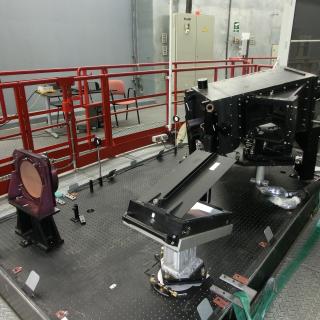
Espectrógrafo de alta resolución en operación en el Gran Telescopio Canarias (GTC) de 10m. usando componentes del espectrógrafo UES, utilizado en el Telescopio William Herschel (WHT) de 4.2 m. entre los años 1992 y 2001.
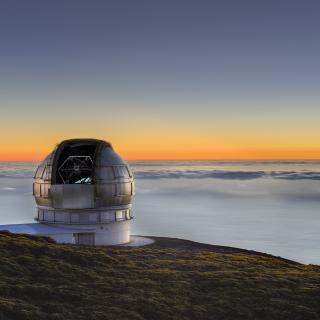
El Gobierno español concede la Acreditación como Centro de Excelencia Severo Ochoa con el fin de reconocer, premiar y promover la investigación científica de alto nivel en los centros y unidades españoles que tengan un alto nivel de excelencia en el ámbito internacional. Los objetivos específicos del Programa Severo Ochoa son: - Mejorar la
